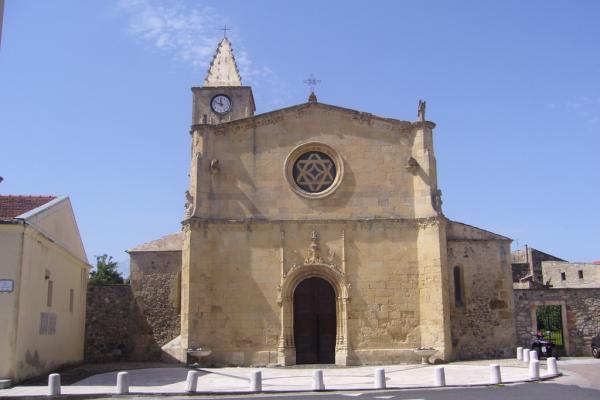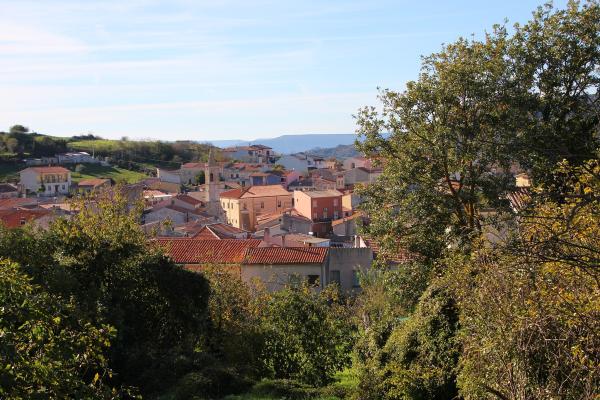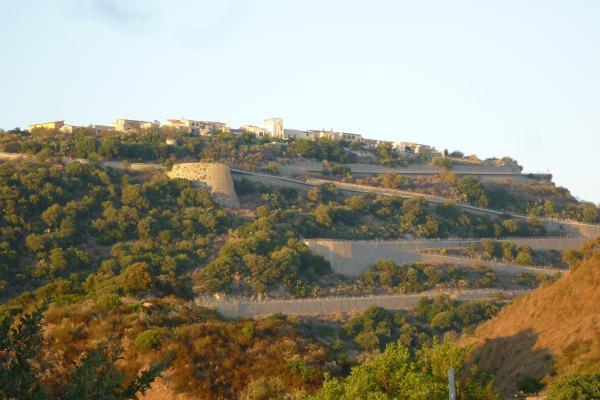It is widely considered one of the most captivating places of worship in Sardinia, due to its magnificent forms, mysterious origin and the legend that surrounds it. The church of Nostra Signora di Bonu Ighinu stands on a hill surrounded by rugged mountains in the territory of Mara, a small town in Logudoro. Its present-day appearance is the result of restoration and extension work that took place in 1797. Little or nothing is known about the pre-existing building, which may have served as the parish church of a medieval village that later disappeared, as documented in the condaghe documents of San Pietro di Silki.
The name of the sanctuary comes from a legend: the Virgin Mary is said to have appeared to bring harmony and stop the quarrels between the nearby villages. In fact, Bonu Ighinu means ‘good neighbourhood’. It was also said that the statue contained inside the church would become very heavy if the inhabitants of the surrounding villages tried to steal it.
It is widely considered one of the most captivating places of worship in Sardinia, due to its magnificent forms, mysterious origin and the legend that surrounds it. The church of Nostra Signora di Bonu Ighinu stands on a hill surrounded by rugged mountains in the territory of Mara, a small town in Logudoro. Its present-day appearance is the result of restoration and extension work that took place in 1797. Little or nothing is known about the pre-existing building, which may have served as the parish church of a medieval village that later disappeared, as documented in the condaghe documents of San Pietro di Silki.
The name of the sanctuary comes from a legend: the Virgin Mary is said to have appeared to bring harmony and stop the quarrels between the nearby villages. In fact, Bonu Ighinu means ‘good neighbourhood’. It was also said that the statue contained inside the church would become very heavy if the inhabitants of the surrounding villages tried to steal it.
You will immediately be struck by the spectacular access staircase, which ends at a square. The Rococo-style façade is divided into rows of overlapping columns full of decorations, ending with pilasters with small spires. Horizontally, however, it is divided into three orders by projecting cornices, with the one at the end sloping down from the centre to the outer area. The style brings to mind the 17th and 18th-century wooden altarpieces found in various churches on the Island. The portal and window - along the same axis - have a frieze with an intertwined ribbon decoration. The unusual appearance of the façade is contrasted by plain interior furnishings, where you’ll find three Baroque-style wooden altars, one of which contains the statue of the Madonna of Bonu Ighinu. The layout is cross-shaped, with a single barrel-vaulted nave, a rectangular transept and chapels near the apse. Every year, on the third Sunday in September, the sanctuary becomes the centre of a festival dedicated to the Virgin Mary, preceded by a novena and pilgrimage. It is no coincidence that, next to the church, there are loggias and cumbessias, stone houses used to welcome novena participants and pilgrims.
The area around the sanctuary is full of prehistoric and historical evidence. On the top of a hill about two kilometres away stand the ruins of the castle of Bonvehì, which was probably built by the Doria family in the 13th century and destroyed by the Aragonese two centuries later. Further north, you’ll find yourself going back thousands of years in time, when you observe the caves of Filiestru and sa Ucca de su Tintirriolu. Here, artefacts from the Bonu Ighinu culture, dating back to the 4th millennium BC, were found for the first time.

















